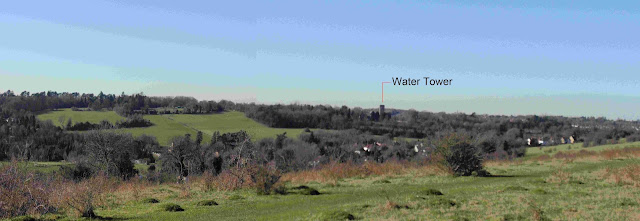To control the speed and spread of introduced pests and
diseases, it’s been suggested that the UK government should take a lead from other
island nations by increasing checks, quarantining imports when required and dispensing
heavy penalties for violations and infringements.
The Woodland Trust would like to start with an immediate ban
on importing ash trees (Fraxinus
excelsior), one of the three native trees worst hit. Currently accounting for an astounding 30%
of our woodland, the common ash is being struck by a fungal infection known as Ash Dieback Disease (Chalara fraxinea). Already extensive throughout Europe it
spreads rapidly, as the Danes have found to their cost, losing 90% of their ash
trees in a mere seven years. Will the common
ash go the way of the elm?
Another established pathogen without a cure is Phytophthora ramorum. Spread through spores and dispersed by rainwater,
this is less discriminate in choosing a host and is responsible for the death
of a variety of plants and trees. The
disease targets both deciduous and coniferous trees and is the cause of Sudden Oak Death. Japanese larches (Larix kaempferi) in particularly vulnerable, as well as camellias, rhododendrons,
pieris and viburnums. At
present there are at least three other destructive Phytophthora species recorded within the UK.
 |
| The effects of Sudden Oak Death (source: http://cisr.ucr.edu/) |
One of the UK’s three native conifers, the scots pine (Pinus sylvestris), is also at risk. A fungal infection referred to as Red Needle Blight (Dothistroma septosporum) causing defoliation and weakening trees, is reaping havoc on a range of conifers, especially pines.
 |
| Example of Red Needle Blight (source: Jarmo Holopainen (2008), www.pbase.com) |
With global distribution behind the prevalence of
destructive non-native organisms, surely there is a case for increasing levels
of home-grown stock in UK nurseries?
Whilst not a short-term solution to meeting demand, this would boost
jobs in the horticulture sector and in the long term maybe we could increase
our exports with healthy, certified pest- and pathogen-free specimens.
During the ‘70s Dutch Elm disease decimated the elm population,
killing an estimated 20 million trees. Although
very small at the time, I can just about recall the elms in our neighbourhood
being felled and the sadness felt throughout the community. Let’s try to avoid a similar scenario by
urging the government to initiate a mandatory ban on ash tree imports until
stricter measures are implemented; please sign this petition: http://epetitions.direct.gov.uk/petitions/39362
And if this article doesn’t convince you of the need for tighter controls, the
Forestry Commission has a list of “top pest and disease threats” available
here: http://www.forestry.gov.uk/pestsanddiseases





